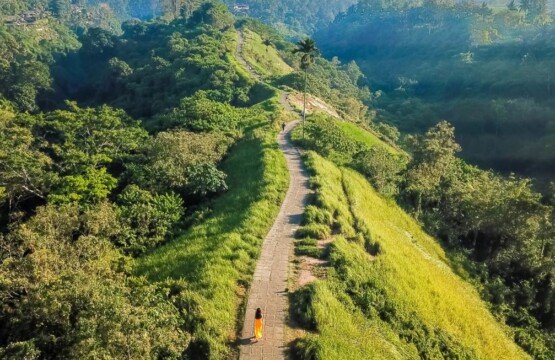🌊 Introduction: The Underwater Paradise of Bali
Bali, the enchanting Island of the Gods, is renowned not only for its stunning temples, vibrant culture, and lush rice terraces but also for its extraordinary underwater world. Beneath the surface of the crystal-clear waters surrounding this Indonesian paradise lies a marine wonderland that attracts diving and snorkeling enthusiasts from every corner of the globe.
The island’s strategic location in the heart of the Coral Triangle—the world’s epicenter of marine biodiversity—makes it a premier destination for underwater adventures. With over 3,000 species of fish, pristine coral reefs, dramatic underwater topography, and water temperatures that remain comfortable year-round, Bali offers some of the most spectacular diving and snorkeling experiences on Earth.
Whether you’re a complete beginner taking your first plunge into the underwater realm or an experienced technical diver seeking thrilling deep-sea adventures, Bali’s diverse marine environments cater to every skill level and interest. From gentle coral gardens perfect for snorkeling to challenging drift dives and historic shipwrecks, the island’s underwater landscape is as varied as it is breathtaking.
🐠 Top Diving Destinations
1. Tulamben – The USAT Liberty Wreck 🚢
Tulamben, located on Bali’s northeast coast, is home to one of the world’s most accessible and spectacular shipwrecks. The USAT Liberty, a World War II cargo ship, lies just 30 meters from the shore in shallow waters, making it perfect for both novice and experienced divers.
What Makes It Special:
- The 120-meter-long wreck is completely encrusted with colorful soft corals and sponges
- Home to an incredible variety of marine life including barracuda, giant trevally, and the occasional whale shark
- Multiple dive sites around the wreck cater to different experience levels
- Night diving here offers encounters with hunting sharks and sleeping parrotfish
Marine Life Highlights: The Liberty wreck has become an artificial reef teeming with life. Schools of jackfish create mesmerizing silver tornadoes, while massive bumphead parrotfish graze on the coral-covered hull. Macro photography enthusiasts will delight in the numerous nudibranchs, ghost pipefish, and ornate ghost pipefish that call the wreck home.
Best Time to Visit: April to November offers the best visibility and calmest seas, though diving is possible year-round.
2. Amed – The Serene Eastern Coast 🌅
Amed, a collection of traditional fishing villages along Bali’s eastern coastline, offers some of the island’s most pristine and uncrowded diving experiences. The area is characterized by its black volcanic sand beaches and exceptional coral reefs.
Diving Highlights:
- The Japanese Wreck: A 40-meter-long patrol boat from WWII covered in vibrant corals
- Jemeluk Bay: Perfect for beginners with its calm, shallow waters and abundant marine life
- Pyramids: Unique underwater structures created by local fishermen, now thriving artificial reefs
Unique Features: Amed’s underwater landscape features dramatic drop-offs, colorful coral walls, and an abundance of macro life. The area is particularly famous for its healthy hard coral formations and the opportunity to see both pelagic species and tiny critters in a single dive.
3. Padang Bai – The Gateway to Nusa Penida 🏝️
Padang Bai serves as the primary departure point for diving expeditions to Nusa Penida, but it also offers excellent local diving opportunities. The area is known for its strong currents and big fish encounters.
Notable Dive Sites:
- Blue Lagoon: A sheltered bay perfect for training dives and night diving
- Jepun: Features a beautiful coral garden with excellent visibility
- Bias Tugel: A hidden gem with pristine coral formations
Advanced Diving Opportunities: Experienced divers can venture to the offshore seamounts and drift dive sites where encounters with manta rays, sunfish (Mola mola), and various shark species are possible.
4. Nusa Penida – The Manta Ray Capital 🦈
Nusa Penida, the largest of Bali’s three Nusa islands, is world-famous for its manta ray cleaning stations and encounters with the elusive sunfish (Mola mola). This destination is primarily for experienced divers due to strong currents and challenging conditions.
Legendary Dive Sites:
- Manta Point: Guaranteed manta ray encounters at this famous cleaning station
- Crystal Bay: The best spot in Bali for Mola mola sightings (July-October)
- Kelingking: Dramatic underwater topography with schools of big fish
Marine Megafauna: Nusa Penida is where dreams of swimming with giants come true. The massive oceanic manta rays, some with wingspans exceeding 6 meters, glide gracefully through the water while smaller reef mantas perform elegant somersaults at the cleaning stations.
🤿 Premier Snorkeling Locations
1. Menjangan Island – The Pristine National Park 🦌
Located in West Bali National Park, Menjangan Island offers some of Bali’s best snorkeling in a protected marine environment. The island’s name means “deer” in Indonesian, referring to the Javanese deer that inhabit the island.
Snorkeling Features:
- Crystal-clear waters with visibility often exceeding 30 meters
- Pristine coral walls dropping dramatically into deep blue water
- Diverse marine life including reef sharks, turtles, and colorful reef fish
- Multiple snorkeling sites around the island’s perimeter
Conservation Success: The protected status of Menjangan Island has resulted in some of Bali’s healthiest coral reefs. Snorkelers can witness the recovery and resilience of marine ecosystems when properly protected and managed.
2. Jemeluk Bay, Amed – The Snorkeler’s Paradise 🐟
Jemeluk Bay in Amed is renowned as one of Bali’s finest snorkeling destinations, offering calm, clear waters and an abundance of marine life just steps from the shore.
What to Expect:
- Excellent visibility and calm conditions suitable for all skill levels
- Vibrant coral gardens starting in shallow water
- Frequent sea turtle sightings
- Traditional jukung (outrigger boats) adding cultural charm to the experience
Unique Snorkeling Experience: The bay’s protected location means minimal waves and currents, making it perfect for extended snorkeling sessions. The coral formations create a natural aquarium effect, with colorful fish darting between the coral branches.
3. Blue Lagoon, Padang Bai – The Sheltered Sanctuary 🌊
Blue Lagoon offers a perfect introduction to Bali’s underwater world, with its calm, sheltered waters and abundant marine life making it ideal for beginners and families.
Snorkeling Highlights:
- Shallow coral gardens perfect for novice snorkelers
- Excellent macro life including ornate ghost pipefish and nudibranchs
- Calm conditions year-round
- Easy beach entry and exit
Family-Friendly Features: The gradual depth increase and calm conditions make Blue Lagoon an excellent choice for families with children or nervous first-time snorkelers.
🐢 Marine Life Encounters
The Big Five of Bali Waters
1. Manta Rays These gentle giants, with wingspans reaching up to 7 meters, are the stars of Bali’s underwater world. The cleaning stations around Nusa Penida provide reliable encounters with both reef and oceanic manta rays.
2. Mola Mola (Sunfish) These bizarre-looking fish, weighing up to 2,000 kg, visit Bali’s waters between July and October. Crystal Bay near Nusa Penida is the most reliable spot for these encounters.
3. Sea Turtles Green turtles and hawksbill turtles are common throughout Bali’s waters. These ancient mariners can be encountered at virtually every dive and snorkel site around the island.
4. Reef Sharks White-tip reef sharks, black-tip reef sharks, and the occasional grey reef shark patrol Bali’s reefs. Night dives often provide the best shark encounters.
5. Whale Sharks While rare, whale shark encounters do occur around Bali, particularly at Tulamben and during certain times of the year around Nusa Penida.
Macro Life Wonderland
Bali’s waters are a paradise for macro photography enthusiasts. The volcanic substrate and varied habitats support an incredible diversity of small creatures:
- Nudibranchs: Over 200 species of these colorful sea slugs have been recorded in Bali’s waters
- Frogfish: Masters of camouflage, these ambush predators come in countless colors and textures
- Ghost Pipefish: Elegant and ethereal, these relatives of seahorses are a favorite among underwater photographers
- Seahorses: Several species of seahorses, including the tiny pygmy seahorse, inhabit Bali’s reefs
🏊♀️ Best Snorkeling Spots for Beginners
Sanur Beach – The Gentle Introduction 🏖️
Sanur’s protected reef system provides ideal conditions for novice snorkelers. The calm waters and gradual depth increase make it perfect for building confidence.
Beginner-Friendly Features:
- Very shallow entry points
- Minimal currents
- Good visibility
- Abundant marine life close to shore
Padang Bai’s Secret Beaches 🏝️
Beyond the main harbor, Padang Bai hides several small beaches with excellent snorkeling opportunities in calm, shallow waters.
Hidden Gems:
- Bias Tugel Beach: A secluded white sand beach with pristine coral
- Tanjung Jepun: Quiet bay with excellent snorkeling for beginners
- Blue Lagoon: The classic beginner’s paradise
🌡️ Seasonal Considerations and Best Times to Visit
Dry Season (April – September)
- Pros: Calmer seas, better visibility, less rainfall
- Cons: Higher prices, more crowded sites
- Best For: Mola mola encounters (July-October), general diving and snorkeling
Wet Season (October – March)
- Pros: Fewer crowds, better prices, dramatic weather
- Cons: Rougher seas, reduced visibility, more rainfall
- Best For: Manta ray encounters, advanced diving
Year-Round Considerations
- Water temperature remains consistent at 26-29°C (79-84°F)
- Some sites are diveable year-round while others are seasonal
- Manta rays are present year-round but more abundant during certain periods
🤿 Diving Courses and Certification
Learning to Dive in Bali
Bali is an excellent place to learn to dive, with numerous PADI and SSI dive centers offering courses from beginner to instructor level.
Popular Certification Courses:
- Open Water Diver: The entry-level certification for beginners
- Advanced Open Water: Builds on basic skills with specialty dives
- Rescue Diver: Focuses on safety and emergency procedures
- Divemaster: The first professional level certification
Specialty Courses Available:
- Wreck Diving
- Deep Diving
- Night Diving
- Underwater Photography
- Nitrox Diving
Choosing a Dive Center
When selecting a dive center in Bali, consider:
- Safety record and equipment quality
- Instructor-to-student ratios
- Boat conditions and safety equipment
- Environmental consciousness and sustainable practices
- Reviews and recommendations from other divers
🌊 Safety Considerations
General Safety Guidelines
For Divers:
- Always dive within your certification limits
- Perform pre-dive safety checks
- Maintain proper buoyancy to protect coral reefs
- Be aware of strong currents, especially around Nusa Penida
- Carry surface marker buoys for drift diving
For Snorkelers:
- Use proper fitting masks and snorkels
- Wear reef-safe sunscreen
- Be aware of boat traffic in busy areas
- Don’t touch or stand on coral
- Snorkel with a buddy
Environmental Responsibility
Protecting Bali’s Marine Environment:
- Never touch or collect marine life
- Don’t feed fish or other marine animals
- Use reef-safe sunscreen
- Avoid kicking or damaging coral with fins
- Participate in underwater clean-up efforts
- Choose environmentally responsible tour operators
🏨 Planning Your Underwater Adventure
Where to Stay
For Diving Enthusiasts:
- Tulamben: Stay close to the Liberty wreck for multiple dives
- Amed: Quiet fishing villages with authentic Balinese culture
- Sanur: Family-friendly with easy access to multiple dive sites
- Padang Bai: Gateway to Nusa Penida adventures
Essential Gear
Must-Have Equipment:
- Well-fitting mask and snorkel
- Comfortable fins
- Reef-safe sunscreen
- Underwater camera
- Dry bag for valuables
- Quick-dry towel
For Divers:
- Dive computer
- Safety sausage/surface marker buoy
- Dive light for wreck penetration
- Wetsuit (3mm recommended)
🎥 Underwater Photography Opportunities
Bali’s diverse marine environments provide endless opportunities for underwater photography, from wide-angle shots of manta rays to extreme macro images of tiny nudibranchs.
Photography Highlights:
- Wide-Angle: Manta rays, schooling fish, wreck photography
- Macro: Nudibranchs, frogfish, ghost pipefish, crustaceans
- Behavioral: Cleaning stations, feeding behaviors, mating displays
- Conservation: Documenting marine life for research and awareness
Photography Ethics
- Maintain safe distances from marine life
- Use natural light when possible
- Don’t manipulate or stress subjects for photos
- Share images responsibly to promote conservation
🌟 Conclusion: Dive into Bali’s Blue Paradise
Bali’s underwater world offers an incredible diversity of experiences that rival any diving destination on Earth. From the historic USAT Liberty wreck in Tulamben to the manta ray cleaning stations of Nusa Penida, every dive and snorkel session reveals new wonders and unforgettable encounters.
The island’s commitment to marine conservation, combined with its rich cultural heritage and warm hospitality, creates an atmosphere where underwater adventures become transformative experiences. Whether you’re floating peacefully above a coral garden in Amed or drifting alongside a massive manta ray at Nusa Penida, Bali’s waters offer moments of pure magic that will stay with you long after you’ve returned to the surface.
The combination of excellent dive infrastructure, diverse marine environments, and year-round diving conditions makes Bali not just a destination but a underwater paradise that calls divers and snorkelers back time and again. Each visit reveals new secrets, new species, and new appreciation for the incredible biodiversity that thrives beneath the waves.
As you plan your underwater adventure in Bali, remember that you’re not just a visitor to these marine ecosystems—you’re a temporary guardian with the responsibility to protect and preserve these incredible environments for future generations. Dive responsibly, snorkel sustainably, and become an ambassador for Bali’s extraordinary underwater world.
The blue waters of Bali are calling—are you ready to answer? 🌊🐠🤿










Join The Discussion